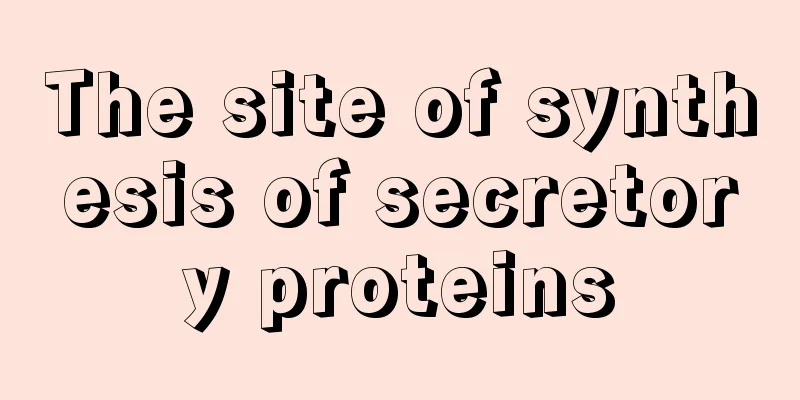The site of synthesis of secretory proteins

|
The human body needs to consume a large amount of protein every day in order to maintain the needs of life. The protein taken into the body is also transported to different parts of the body differently. Proteins in the human body are mainly divided into two types, one is secretory protein and the other is organelle protein. Secretory proteins are very common in people's lives. For example, human saliva is composed of secretory proteins. Where is the main site of secretory protein synthesis in the human body? Most of the proteins that make up organisms are synthesized on ribosomes in the cytoplasm. After synthesis, various proteins must be transported to different parts of the cell to ensure the normal progress of cell life activities. Some proteins need to pass through the endoplasmic reticulum membrane and enter the endoplasmic reticulum cavity to become secretory proteins; some proteins need to pass through the membranes of various organelles and enter the organelles to form organelle proteins. Secretory proteins are proteins that are synthesized inside cells and then secreted outside the cells to function. For example: salivary amylase, pepsin, digestive enzymes, antibodies and some hormones. Note: For example, respiratory enzymes are not secretory proteins. Secretory proteins synthesized on ribosomes must pass through the endoplasmic reticulum and Golgi apparatus instead of being transported directly to the cell membrane. Further research has shown that after the proteins secreted from the ribosomes enter the endoplasmic reticulum cavity, they must undergo some processing, such as folding, assembly, and adding some sugar groups, before they can become relatively mature proteins. Then, the endoplasmic reticulum cavity expands and buds to form membrane-bound vesicles, which wrap the proteins and transfer them to the Golgi apparatus, transporting the proteins to the Golgi apparatus cavity for further processing. Next, the edge protrusions of the Golgi apparatus form vesicles, which wrap the proteins in the vesicles and transport them to the cell membrane. The vesicles fuse with the cell membrane and release the proteins to the outside of the cell. Although protein transport is relatively complex, it can be explained by a relatively simple model in biological systems. Each polypeptide that needs to be transported contains an amino acid sequence, called a signal peptide sequence, which guides the polypeptide to different transport systems. |
<<: What do chief cells secrete
Recommend
Peitu Shengjin Chuai Decoction for treating middle and late stage lung cancer
Traditional Chinese medicine emphasizes the treat...
Brief introduction: Effective methods to prevent breast cancer
Breast cancer is extremely harmful to women's...
What's up with the black spots on the tip of my tongue
If there are black spots on the tip of the tongue...
What causes esophageal cancer
In recent years, esophageal cancer has become one...
What are the methods to remove dandruff
Many people want to have healthy hair, especially...
Is the eczema peeling going to heal soon?
Anyone who has had eczema must know how painful i...
What are the most common symptoms of kidney cancer?
Kidney cancer is not uncommon in life. The sympto...
Is there any relationship between liver cancer and eating moldy food? Be careful of this kind of low-quality food causing liver cancer
Soy sauce is an indispensable condiment on the Ch...
What to do if glycosylated hemoglobin is too high
We often hear that glycated hemoglobin is high, w...
Damage to oral mucosa
Damage or even shedding of the oral mucosa proves...
Reasons for zygomatic bone expansion Sleeping posture
We all know that the cheekbones are very importan...
Does perming affect pregnancy preparation?
Perming is not good for people's health. Try ...
Treatment of ovarian cancer with Shenqi Fuzheng Baidu Pills combined with chemotherapy
Patients with middle and late stage ovarian cance...
Can I drink ginger and jujube tea in autumn?
Friends who are keen on health preservation know ...
What is the difference between hepatocellular carcinoma and liver cancer? Different early reactions
Hepatocellular carcinoma and liver cancer are bot...









